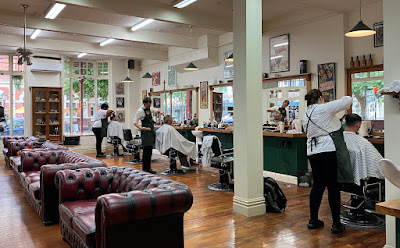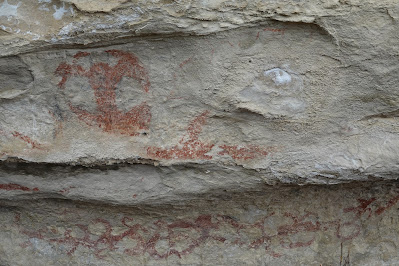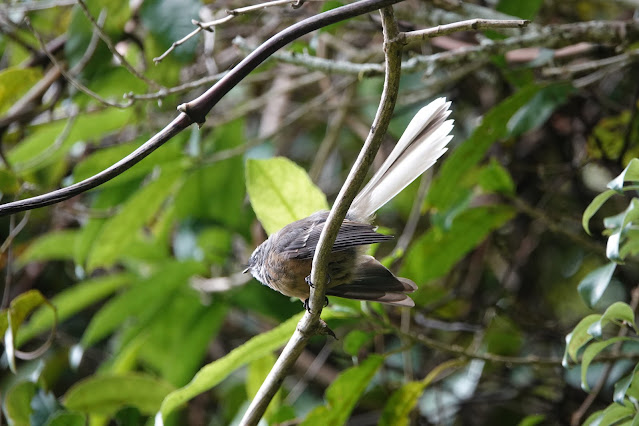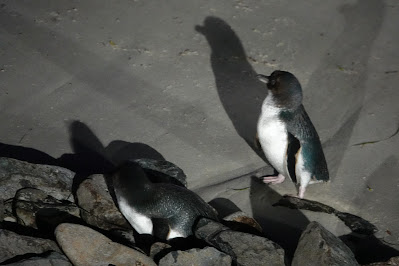Real time? We're a week away from leaving Aotearoa/New Zealand.
Blog time (Week 6)? We flew from Christchurch to Wellington, the nation's capital, looking forward to some different adventures from the wild South Island. We had a well-planned itinerary: explore the capital with a side trip to Kapiti Island, a protected wildlife sanctuary; drive to Napier for its Art Deco festival (after a 1931 earthquake destroyed the town, it was rebuilt in the style of the times; the festival celebrates that period, with people often donning period dress) and taste wine in the nearby, famed Hawkes Bay region; head to Whanganui on the west coast and then Lake Taupo in the center of the island; and explore the Coromandel Peninsula and its coastal beauty.
Well ... Mother Nature/Mother Earth was having none of that!
As many of you noted, a deluge had hit the North Island while we were South Islanding it, bringing destruction and some deaths in Auckland and environs., but we'd hoped the region would recover by the time we made it north. But the recovery had only started when Cyclone Gabrielle hit in the second week (Valentines Day to be exact) of February, propelling massive mudslides, sweeping away entire roads and bridges, felling huge trees, The Coromandel and Hawkes Bay were isolated for days without electricity - and cell service - fuel, and food. Farms, orchards, and vineyards were submerged, beaches littered with debris.
Though Wellington, itself, was fine - locals told us the gusty winds and side-blowing rains were normal for one the windiest cities on earth - our plans were kaput. Our day-trip to Kapiti was cancelled by the ferry captain because of the impending cyclone winds. Getting to Napier was impossible, with all roads closed.
We were fortunate to have a gracious AirBnB host who promised us we could stay an extra day if need be and who advised us as we devised alternative plans. And our Home Exchange hosts for our planned next stop, Whanganui, offered to take us in several days earlier.
Indeed, Graham and Libby were our saviors in many ways. They were easy "housemates" (their home is small, about the size of ours in Anacortes, but we really enjoyed their company, including discussions about Kiwi and American politics and some friendly but competitive cribbage games) and they went out of their way to help us adjust our plans. They even hooked us up to stay with friends near New Plymouth and to rent another friend's apartment in Mount Manganui on the Bay of Plenty. The 3 "boy friends" had gone to teachers training together back in the day.
Our stay with Graham and Libby was "spiced up" by a 6.2 earthquake centered near Kapiti Island to the south, which shook the house for about a minute while we were having dinner together. What was going to happen next ... a plague of locusts??
So, here are a few highlights from our first weeks on the North Island. Wellington, includig an ebike tour along the harbor and the national museum. Whanganui, including a jet boat tour to the Bridge to Nowhere.
 |
| Dotting the "I" |
 |
| Wellington's wind needle - vertical on the day we rode ebikes by it, but often bent over by the wind |
 |
| "Solace in the Wind" invites one to hold its hand and stare out into the harbor |
 |
| A fun ebike tour on very good bikes |
 |
| Wellington is very hilly, with funiculars as the only way to access some houses like this one |
 |
| The viewpoint at the midpoint of the ebike tour |
 | |
| One of many Maori sculptures at Te Papa, the National Museum | |
 |
| After 6 weeks of travel, it was time to take care of some business, like a haircut, in this very traditional-looking barbershop in Wanganui (the 70-year old guy is in the middle chair) |
 |
| Whanganui is a bit of an arty town, with some very good galleries, including this working glass-blowing studio |
 |
| At the Whanganui farmers market |
Like the First Nations people of the Columbia River, eels make up a sizeable part of the Maori diet. This structure is used to catch the delicacy.
 |
| Relaxing in our hosts' beautiful garden |

















































